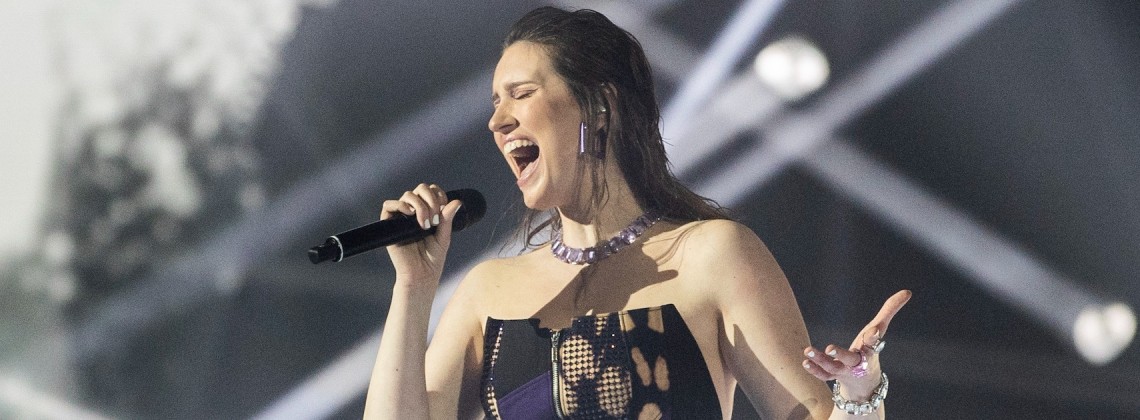
Eurovision 2023: Does the running order matter?
Patrick Flynn
12 April 2023
Debates around the running order at Eurovision are often muddied by the fact that the lineup has been producer-led since 2013 (aside from the random draw which determines which half a song performs in).
It’s widely accepted that performing later is better in television competitions, so much so that the terms ‘pimp slot’ (performing last) and ‘death slot’ (performing second) exist in common parlance. We see this in a whole host of TV shows in which producers may choose to hamper an unfavoured act by placing them in slot two, or seek to give them a boost by putting them on last. It was humorously pointed out on Twitter recently that five of the six eliminations in the most recent series of Dancing On Ice came from the person second in the running order.
Eurovision isn’t quite as predictable, but producers are still well aware of the effect running order has. Those in charge of the line-up seldom place contenders early in the first half of the grand final and damage their chances of winning, as might happen under a random draw. Semi-final winners who ended up randomly drawn into the first half of the final have almost all ended up being placed in the 10–13 range (as late as it’s possible for them to perform), with an average draw of 10.33 out of 13.
Because high-performing songs are more likely to be placed in later slots, we need to come up with a method of analysing running order which accounts for the strength of each song to avoid overstating the effect of the draw. Of course, we have actual results that can stand in as a marker for song strength, but here’s the issue: the performance of each song is directly related to running order — the very variable we are trying to study!
At this point we can thank the Eurovision gods for the semi-finals. About half the songs at Eurovision are performed twice, almost all of which are drawn in different running order positions. Using this data, we can begin to see the effect the draw has on a song’s performance, independent of its strength.
To do this, I have created an iterative model that assesses initial running order bias, estimates each song’s strength based on how it performed relative to running order expectations at each stage, then models running order bias again (this time accounting for each song’s strength) and so on, until running order bias and song strength converge.
The key findings
The results are pretty much what you might expect as later performances tend to yield better results. In the below graphics, each song’s performance is scaled from zero to one, where zero would mean being ranked last by every country and one would mean being top of everyone’s list. The running order effect, which can be positive or negative, is the difference on this scale between a song’s expected performance from an average running order position and their actual performance.
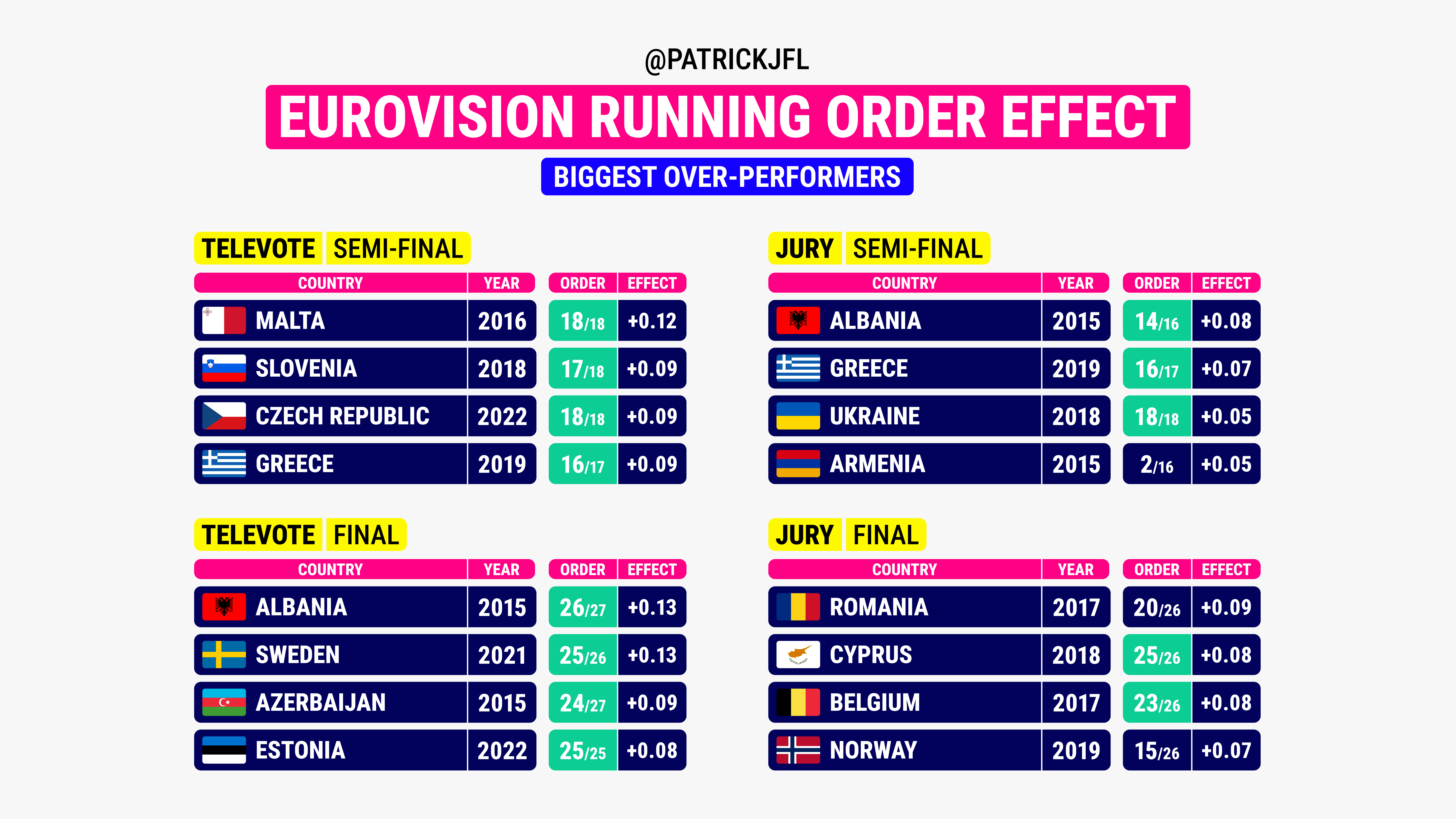
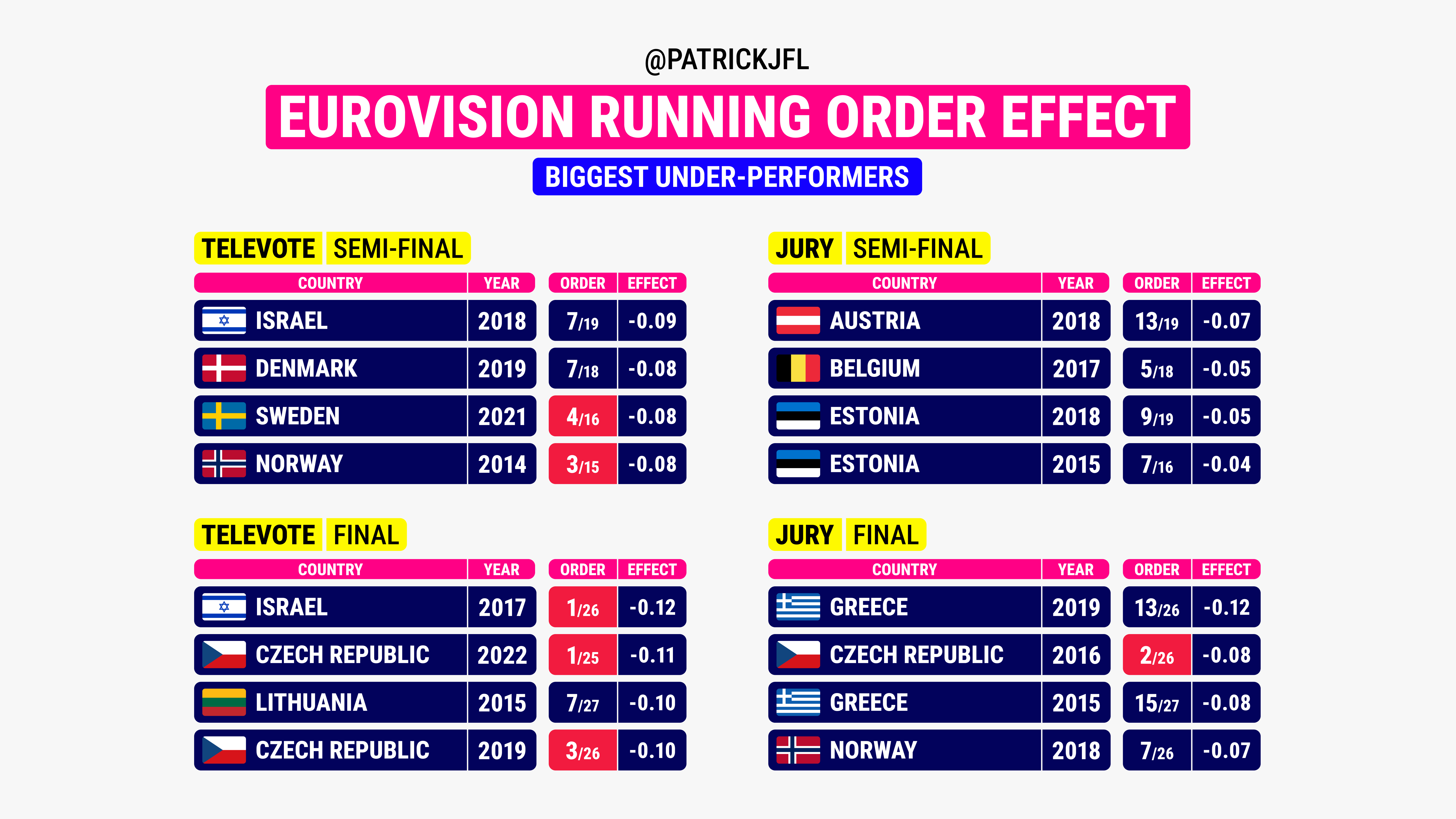 We can see that the top televote over-performers in both the semi-finals and finals were all among the last four songs to be performed at each stage, whereas none of the biggest under-performers were later than seventh in the running order. With the juries, the effect is still there but the results are a bit more random, which may also reflect the propensity for jurors to change their minds on a song over the course of Eurovision week.
We can see that the top televote over-performers in both the semi-finals and finals were all among the last four songs to be performed at each stage, whereas none of the biggest under-performers were later than seventh in the running order. With the juries, the effect is still there but the results are a bit more random, which may also reflect the propensity for jurors to change their minds on a song over the course of Eurovision week.
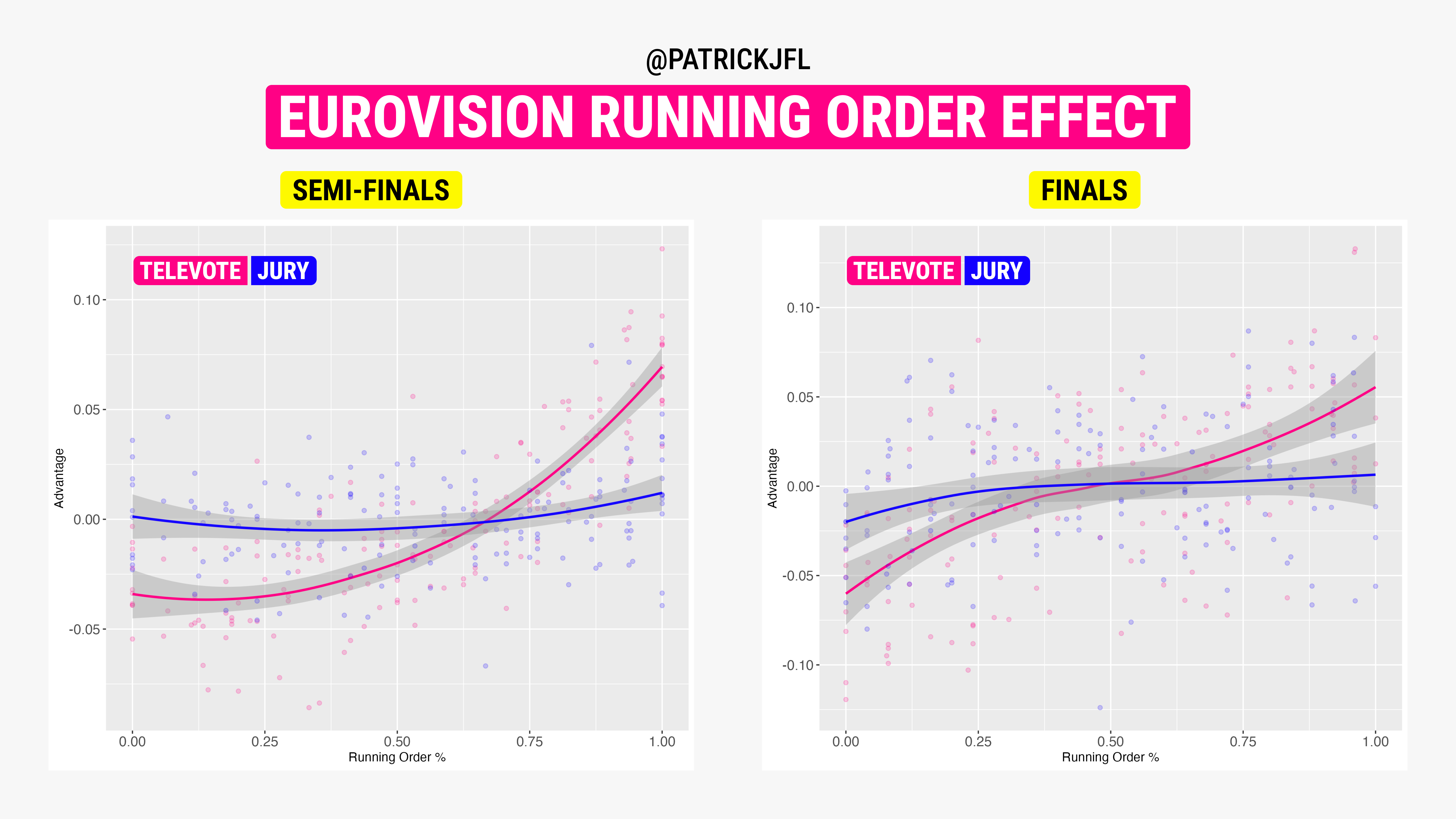
Looking at the overall data, there’s a pretty similar pattern across both the semi-finals and the finals. Interestingly, the running order effect accelerates towards the end of the semi-finals, where performing last is a huge boost. In finals, the effect steadily increases but not as quickly, with a significant drag associated with going early in the final. This is perhaps understandable given that spectators have to sit through 25 to 27 songs, making it much more likely an early song will be forgotten by the end.
Another significant piece of data is that there is no evidence of ‘viewer fatigue’ in the grand final. This may well be a factor in those who have watched the whole show, but viewing figures from Spain last year (below) showed that almost twice as many viewers tuned in for the final song (Estonia, 7.4 millon) as they did for the opener (Czech Republic, 4.1m). If figures peak with the final song, it’s understandable that the running order effect would be highest at the end of the show.
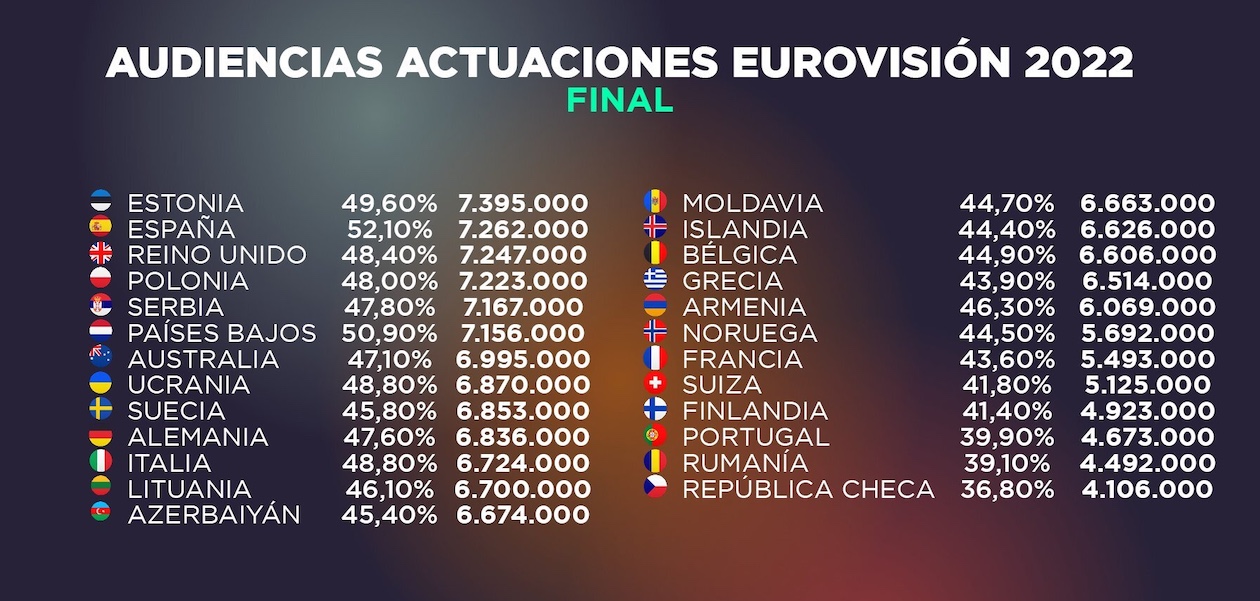
As already mentioned, the running order effect is much smaller with jurors than televoters, though it is still present. Both the semi-final-closer boost and the early-in-the-final drag can be found in the jury data.
For an average song, the difference between the best and worst running order slots is roughly two positions in the televote ranking in the semi-finals and three in the final. In the new 100% televote semi-finals, running order could easily turn a narrow qualifier into a casualty, or carry an otherwise non-qualifier into the final.
Featured image by EBU / Andres Putting
Patrick Flynn
12 April 2023


